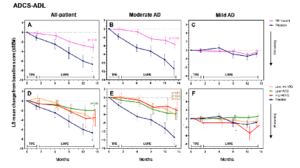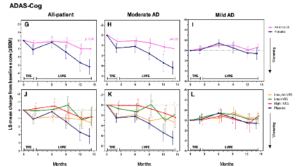Therapeutic Plasma Exchange (TPE): Advancing Health and Longevity
By Dr. Allen Green
Introduction
Imagine a therapy that not only treats serious conditions but may also slow the aging process – this is the promise of therapeutic plasma exchange (TPE). TPE is a cutting-edge medical procedure that holds the potential to revolutionize health and longevity. By removing and replacing plasma—the liquid component of blood—TPE can help detoxify the body, restore balance, and rejuvenate its systems.
What is Therapeutic Plasma Exchange?
TPE is a process where blood is drawn from the body, the plasma is separated and removed, and a replacement fluid along with the cellular components of the blood are returned to the individual.
Key Benefits of TPE:
- Detoxification: Removes toxins, autoantibodies, and inflammatory molecules.
- Regenerative Potential: Eliminates pro-aging factors to restore systems to a more youthful, balanced state.
- Wide Applications: Proven effective in treating autoimmune disease, neurological disorders, and emerging longevity therapies.
How Does TPE Work?
TPE is a seamless and safe process conducted under expert supervision. It is a continuous process involving:
- Blood Collection: A small amount of blood is drawn into the apheresis machine.
- Plasma Separation: Plasma is separated from red blood cells, white blood cells, and platelets via centrifugation.
- Replacement: The removed plasma is replaced with a substitute, such as albumin or saline solution.
- Reinfusion: The cellular components of the blood and the replacement fluids are reinfused into the body.
Procedure Highlights:
- Duration: Each session typically lasts about 2 hours.
- Safety: Performed by highly trained professionals using state-of-the-art equipment.

Applications of TPE in Modern Medicine
TPE is an FDA-approved procedure with 111 recognized indications across 66 medical conditions, as outlined by the American Society for Apheresis.
Common Applications:
- Autoimmune Diseases: Treats conditions like thrombotic thrombocytopenic purpura, myasthenia gravis, and multiple sclerosis.
- Neurological Disorders: Improves outcomes for Chronic Inflammatory Demyelinating Polyneuropathy (CIDP), Guillain-Barré Syndrome, and Alzheimer’s Disease.
- Longevity Research: Emerging studies highlight its potential to slow aging, enhance recovery, and promote overall vitality.
Research and Evidence
Therapeutic Plasma Exchange (TPE) is supported by a growing body of research, showcasing its potential to transform health and longevity. Pioneering studies have illuminated the relationship between components of blood and the aging process, sparking a wave of innovative exploration.
The Discovery of Pro-Aging Factors
In 2005, a groundbreaking study, “Rejuvenation of aged progenitor cells by exposure to a young systemic environment”, revealed how the circulatory connection between young and old mice caused reciprocal changes: the young mouse exhibited signs of aging, while the old mouse displayed signs of rejuvenation. This discovery led researchers to hypothesize that blood contains critical factors influencing youth and aging.
Some researchers focused on the regenerative properties of young blood, while others, including our Chief Medical Officer, Dr. Dobri Kiprov, explored a different hypothesis—that pro-aging factors in older individuals’ plasma accelerate the aging process. Subsequent animal studies validated this approach, showing that plasma exchange could rejuvenate tissues derived from all three germ layers, the building blocks of the body:
- Ectoderm: Enhanced nerve growth in the brain.
- Mesoderm: Accelerated muscle recovery.
- Endoderm: Improved liver function.
Genomic and proteomic analyses further demonstrated that plasma exchange resets these systems to a more youthful state, underscoring its systemic rejuvenative potential.
The AMBAR Trial: A Breakthrough in Alzheimer’s Disease
A pivotal Stage III clinical trial, known as the Alzheimer’s Management by Albumin Replacement (AMBAR) study, was conducted by a team of Spanish researchers in collaboration with U.S. institutions, including the Cleveland Clinic. The trial investigated the benefits of TPE in patients with mild to moderate Alzheimer’s disease.
The results, published in Alzheimer’s & Dementia: The Journal of the Alzheimer’s Association, were groundbreaking:
- A 60–70% reduction in disease progression for patients with moderate Alzheimer’s.
- For patients with mild Alzheimer’s, actual cognitive improvement was observed—an unprecedented outcome.
Notably, TPE outperformed newly FDA-approved Alzheimer’s drugs with fewer side effects and a superior safety profile.

-Graphical representation of the change from baseline on an activities of daily living scale for patients treated with TPE (pink) vs placebo (blue). Note that the patients undergoing treatment declined more slowly than those not receiving treatment.

– Graphical representation of a cognitive scale for patients undergoing TPE (pink) vs. placebo (blue). Moderate AD patients declined more slowly while patients with mild disease improved from baseline.
Patient Experiences at Lifespan Edge
At Lifespan Edge’s Chief Medical Officer’s Mill Valley clinic, patients undergoing TPE for longevity often report life-changing results, including:
- Enhanced sleep quality.
- Improved skin health and elasticity.
- Increased energy, strength, and mobility.
- A profound sense of rejuvenation, often described as “rewinding the clock.”
Why Choose Lifespan Edge?
At Lifespan Edge, we combine innovative science with personalized care to deliver exceptional results.
- Advanced Technology: State-of-the-art facilities ensure the highest standards of safety and comfort.
- Expert Team: Our specialists are leaders in the field of TPE.
- Holistic Approach: We integrate cutting-edge research with individualized treatment plans to maximize your health potential.
Take the Next Step Toward Vitality
Experience the transformative benefits of TPE today. Contact us to schedule a consultation and explore how Lifespan Edge can help you achieve your health and longevity goals.
 Search
Search
